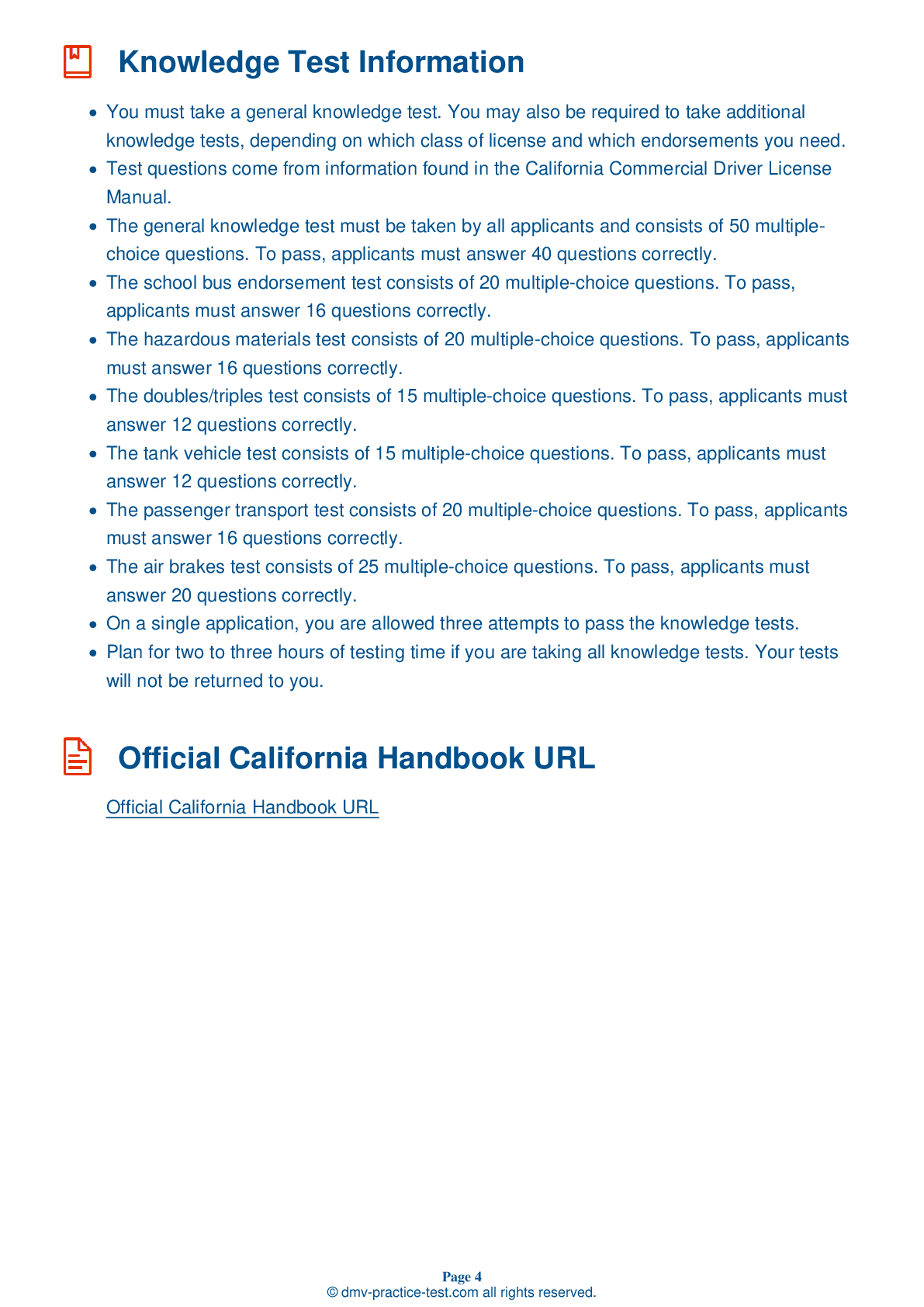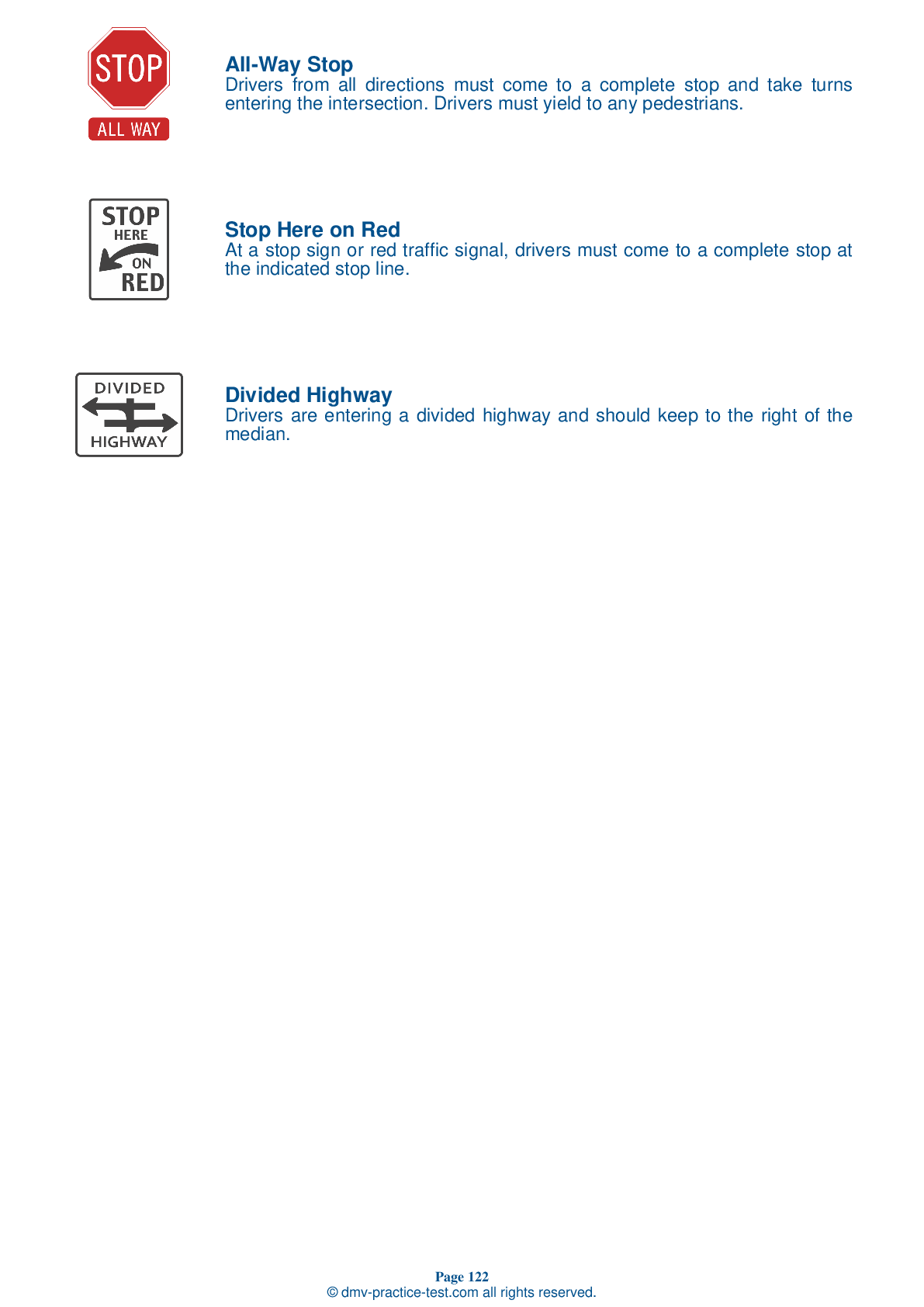Class A Driving Test | California 2025 #1
Train for FREE online with our California class A license test. The official exam test consists of several obligatory parts, with all of them checking your knowledge of different blocks of road rules. If you need to obtain a CA CDL class A permit in 2025, practice as much as possible. Free sample tests published on our website will help you check and improve your knowledge and boost your grades. Please bear in mind that CDL class A requirements may vary from state to state.
1 . When you double your speed from 20 to 40 mph, your vehicle's stopping distance is:
Doubling your speed from 20 mph to 40 mph multiplies your stopping distance by four. Adjust your driving accordingly.
2 . Front wheel braking works:
Front wheel braking is effective under all road conditions. It is unlikely that you will experience a front wheel skid, even on ice.
3 . When driving a 50-foot truck at 50 mph, your minimum following distance should be:
At speeds below 40 mph, you should allow at least one second of following distance for every 10 feet of your vehicle. When traveling at higher speeds, follow the same formula, then add one additional second to your following distance.
4 . In cold weather, an alcohol evaporator should be checked and filled:
An alcohol evaporator can help prevent ice from building up in an air brake system. In cold weather, the evaporator should be checked and refilled every day.
5 . What tells you how much pressure is in your vehicle's air tanks?
A vehicle that is equipped with air brakes must also be equipped with a supply pressure gauge. This gauge tells the driver how much air pressure is in each of the vehicle's air tanks.
6 . When adjusting your mirrors before a trip:
When properly adjusted, your mirrors should each display some part of your vehicle. Being able to see your own vehicle in your mirrors will give you a point of reference when judging the positions of other objects.
7 . Anti-Lock Braking Systems (ABS):
If equipped, ABS is in addition to a vehicle's normal braking system and does not increase or decrease the braking power of any other system. ABS only activates when a vehicle's wheels are about to lock.
See the exact questions that will be on the 2025 California DMV exam.
99.2% of people who use the cheat sheet pass the FIRST TIME
Lillian MCcranie explains how our CDL study guide was helpful in passing the exam and recommends it to everyone.
Cameron tells us how he purchased the CDL exam, and found it to be a useful tool which helped him pass the exam and find a job.



